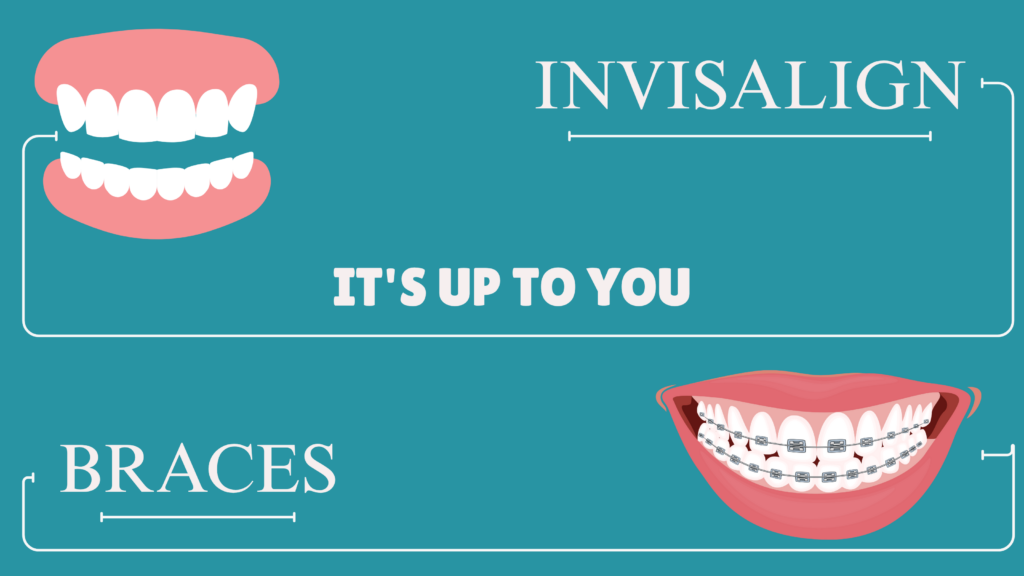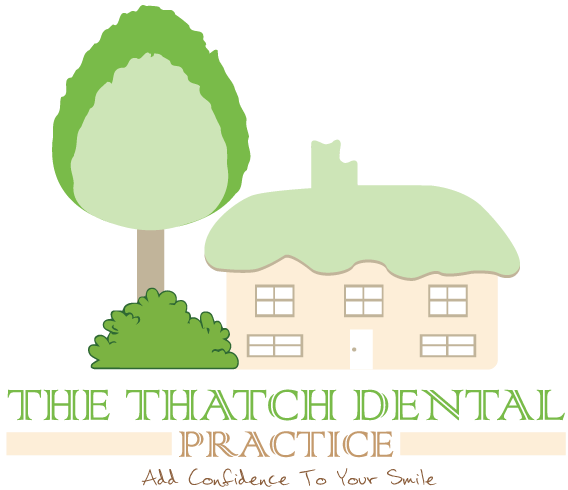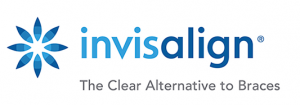
PROBLEM: Confused Between Invisalign and Braces?
You’ve finally made the decision to fix your crooked teeth. But the moment you start looking for options, you hit a wall: Invisalign or braces? Both straighten teeth. Both are trusted by dentists. But they look different, feel different, and come with different rules.
Braces have been around for decades. You’ve probably seen them on friends, classmates, or maybe even had them as a teen. Invisalign, on the other hand, is a newer solution. It uses clear plastic trays that are nearly invisible, promising more comfort and flexibility.
So, which one works better? Which one fits your lifestyle, budget, and treatment needs? And more importantly, which one actually delivers long-term results?
AGITATE: A Mistake Here Could Cost You Time, Money, and Results
Choosing the wrong treatment can lead to major frustration.
Let’s say you pick Invisalign for convenience, but you struggle to wear the aligners for 22 hours a day. That could delay your results—or worse, your teeth could shift back.
Or maybe you go for metal braces because you want something powerful. But a few months in, you find it tough to keep up with cleaning. You get plaque buildup or gum irritation. Not ideal.
This isn’t just about straight teeth. It’s about long-term oral health, your confidence, and how you feel every time you smile. That’s why it’s important to understand the real differences between Invisalign and braces—beyond just appearance.
Let’s break it down.
SOLUTION: Invisalign vs Braces – A Realistic, Fact-Based Comparison
We’re going to look at:
- Effectiveness
- Comfort and lifestyle
- Maintenance and hygiene
- Treatment time
- Cost
- Real-world case results
Let’s dive in.
1. Effectiveness: Which One Straightens Teeth Better?
Braces:
Traditional braces use brackets and wires to apply consistent pressure on the teeth. They can treat mild to severe orthodontic issues—including major bite problems, extreme crowding, and rotated teeth.
Invisalign:
Invisalign uses custom plastic aligners that are replaced every 1–2 weeks. It’s most effective for mild to moderate issues. It can also handle some bite corrections—but in more complex cases, dentists often recommend braces.
Case Study Insight:
A 2021 study published in the American Journal of Orthodontics evaluated 120 patients. Braces achieved better outcomes in severe malocclusion cases (Class II and III bites). Invisalign showed strong results in patients with mild to moderate crowding and spacing.
Bottom Line: Braces are more powerful for complex cases. Invisalign works well for moderate issues.
2. Comfort and Lifestyle: Which One Fits Better Into Daily Life?
Braces:
You can’t take them off. That’s good for consistency but limiting for lifestyle. Braces often cause mouth soreness, especially after adjustments. You also have to avoid hard, sticky, or chewy foods.
Invisalign:
Aligners are removable, making eating, brushing, and flossing much easier. However, they must be worn 22 hours a day, and you need discipline to stick to that.
Real Patient Feedback:
In a 2022 survey of 500 Invisalign users, 74% reported discomfort during the first few days of a new tray, but most said the pain was manageable and temporary. 85% liked the ability to remove aligners during meals.
Bottom Line: Invisalign offers more flexibility but requires commitment. Braces are more rigid but require less user effort.
3. Maintenance and Hygiene: Which One’s Easier to Clean?
Braces:
Cleaning around wires and brackets is tricky. Food gets stuck. You’ll need tools like interdental brushes or water flossers. Without proper care, there’s a risk of plaque buildup, stains, and gum problems.
Invisalign:
You remove aligners to brush and floss as usual. However, you must also clean the trays to prevent bacteria buildup.
Bottom Line: Invisalign wins in daily hygiene, but aligners must still be cleaned carefully.
4. Treatment Time: Who’s Faster?
Braces:
Average treatment time is 18 to 24 months, depending on case complexity.
Invisalign:
Usually takes 12 to 18 months for mild to moderate cases. More severe cases take longer—and may require additional “refinements” (extra trays after the initial plan).
Case Study Insight:
A 2022 review of 1,000 Invisalign cases found:
Case Type | Avg. Refinement Rate |
Mild crowding (<3mm) | 42% |
Moderate crowding (3–5mm) | 64% |
Severe crowding (>5mm) | 81% |
Bite correction needed | 77% |
Cosmetic-only cases | 35% |
Bottom Line: Invisalign may be faster—but expect refinements. Braces are often steadier in long-term cases.
5. Cost: Which One is More Budget-Friendly?
Braces:
In UK, the average cost of metal braces ranges from £1,500 – £3,000. Ceramic Braces Cost: £2,000 – £4,500. These are less visible than metal braces but function similarly. Price depends on case severity, location, and whether both arches are treated.
Invisalign Cost: £1,500 – £5,500
- Mild cases (e.g., minor crowding or spacing): £1,500 – £2,500
- Moderate cases: £2,500 – £4,000
- Complex cases (multiple aligners, longer treatment): £4,000 – £5,500
Prices vary depending on:
- The number of aligners required
- Treatment length
- The provider’s experience (Invisalign Diamond or Platinum providers may charge more)
- If refinements or retainers are included in the plan
Bottom Line: Braces are generally more affordable upfront. Invisalign costs more—but some value the flexibility and aesthetics.
Looking to straighten your smile with confidence? At our dental clinic, we specialize in Invisalign treatment, helping patients across the uk achieve results they love. We use advanced digital scanning technology to ensure a precise, comfortable fit—no messy impressions required. Our experienced team has successfully treated a wide range of Invisalign cases, from mild crowding to complex alignment issues. Whether you’re starting your smile journey or refining the final touches, we’re here to guide you every step of the way. Book a consultation today and see how easy and effective Invisalign can be with expert care and digital precision.
6. Aesthetics: Which One Is Less Noticeable?
Braces:
Metal braces are highly visible. Ceramic or clear braces reduce visibility but are still noticeable up close.
Invisalign:
Clear aligners are virtually invisible from a distance. Many adults and teens prefer them for this reason.
Bottom Line: Invisalign is the clear winner if appearance matters to you.
Conclusion: So, Invisalign or Braces—Which One Should You Choose?
There’s no one-size-fits-all answer. It depends on your case type, lifestyle, discipline, and budget.
Choose Braces if:
- You have severe crowding or bite issues
- You want a fixed solution with no daily effort
- Budget is a priority
Choose Invisalign if:
- Your case is mild to moderate
- You’re disciplined enough to wear them consistently
- You value appearance and convenience
Before making a decision, get a consultation with an orthodontist. Many clinics now offer digital scans that show how your teeth would move with Invisalign or braces—so you can see the difference before you commit.
We have the facility of digital scan. If you also want to see how your teeth will look after the INVISALIGN or BRACES, then you can CLICK ON IT SMILE
Final Word
Don’t just follow trends. Choose what works for your mouth, your habits, and your goals. Whether it’s clear trays or classic brackets, the end goal is the same—a confident, healthy smile that lasts.
Need help deciding? Book a free consultation with your local orthodontist and get a personalized treatment plan. Your smile deserves it.







